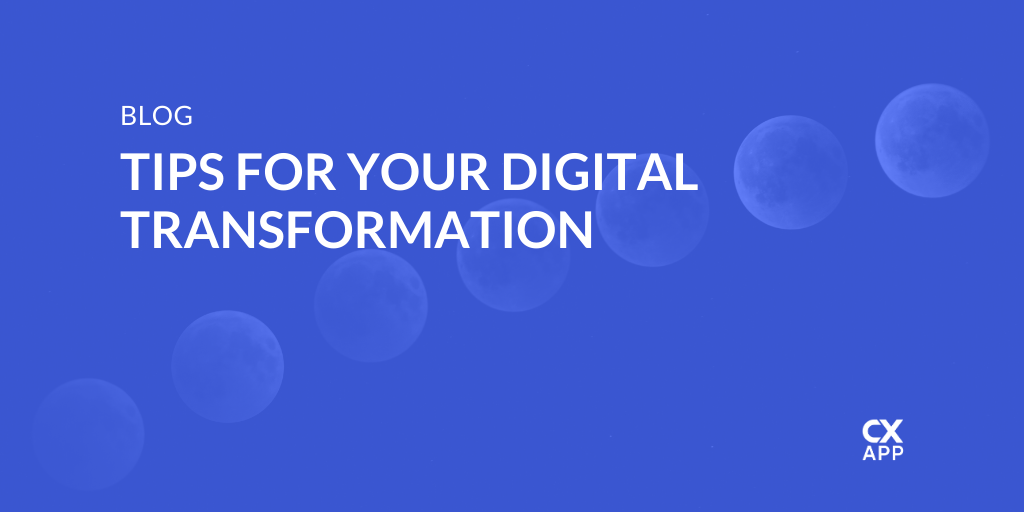It doesn’t matter what market you serve, customers from all walks of life demand a responsive, seamless digital experience and they want it as soon as possible — like right now soon. Bridge that with the more physical side of business — brick and mortar especially — and we’re seeing similar demands for in-person or on-location, digital experiences too.
But beyond just the conventional experiences, people want to be able to monitor and track what’s happening in their digital lives. With a power or water bill, for example, customers want to be able to see how much of each resource they’re using, the breakdown of costs, and even varying solutions for managing excess. They also demand the necessary controls to take action, through some form of an all-encompassing digital interface — usually mobile friendly.
Such demands facilitate a radical overhaul of the conventional business world, including nearly all operations from marketing and promotions to product or service development.
In order to meet these incredibly lofty and continuously rising demands, companies and organizations must digitize their age-old business processes, sometimes even adopting entirely new ones to meet evolving landscape requirements.
In essence, the digitization of the business world is a solution that aims to help companies keep up with all the market and technology growth that’s happening. It’s not that brands or organizations necessarily want to make the jump, it’s more that they have to.
The Top-Five and Best Mobile-Powered Customer Experience Touchpoints
But what processes are truly being modernized? What are the most popular “mobile-powered” customer experience touchpoints that are part of this digital evolution?
1. Real-Time Communications:
You’re probably well aware that poor communication can sink a business not just internally, but also with customers, vendors and partners too. But poor doesn’t just entail lacking or improper communications, it also includes poorly timed or slow ones too.
Everyone today — your customer base especially — wants to receive the most up-to-date and accurate information, as soon as possible.
In fact, 80 percent of business buyers — including B2B and B2C — expect companies to respond and interact with them in real-time. That pretty much makes it a requirement to do business in today’s landscape.
Essentially - email is the new “snail” form of mail. It’s s-l-o-w and not contextual. Real-time communications can only be made possible through mobile - alerts, notifications, up-to-the minute feeds. These are all ways you can communicate internally and externally on-the-go.
2. Personalization:
79 percent of consumers indicate they will only engage with an offer if it has been personalized to their own experiences or past interactions with a brand.
Customers demand more and more personalization options to make the experience truly their own, yes. But personalization has more benefits than you might expect for your own business, particularly when it comes to intelligence or analytics.
In delivering a more relevant experience, you also learn more about your audience. What kind of products or services do they migrate to most? Why? How much time do they spend with them, and how did they discover these products? Through mobile interactions, specifically apps, you inherently know more about your customer. You can associate actions, reactions, and interactions to who that person is, their business, and even down to their business needs. Apps are able to collect and share this data with organizations that are truly looking to make the customer experience journey a bit more personal.
Even the simplest of tricks like automating customer communications — like including the customer’s name in marketing announcements — help give each person a more positive experience. It’s a personal touch that shows you’re willing to go the extra mile. It also makes them more likely to use your products and services which generates even more data — data that you can put to good use.
3. Contextual or Location-Based Experiences:
78 percent of U.S. based internet users say that personally relevant content from brands is likely to increase their purchase intent. That includes contextually relevant offers or promotions.
Contextually and geographically, you can deliver personalized experiences on a grander scale than ever before. Imagine, for example, sending out a mobile notification about a sale or promotion going on at a nearby brick-and-mortar store? But not just doing that, sending it out at exactly the precise moment they pass by your store in a shopping center.
Now let’s extrapolate that. What if your customer came into your headquarters or attended your event. Wouldn’t you want to send them an alert, notification or offer that maps to where they are and why they’re there? If they’re passing by a tradeshow booth… boom instant offer. If they’re arriving on-site at your office complex… shazam, a personal hello and a link to a map that guides them to exactly where they need to be.
It goes well beyond these simple examples, as contextually-relevant experiences can really immerse each customer or audience member in the overall campaign. You can deliver new events, experiences and benefits based on what, where, when, how and why a customer interacts with your brand.
The best part is that it’s all facilitated via mobile, a platform that nearly everyone has on their person at all times.
4. Instant, Easy Access:
77 percent of marketers say that real-time personalization and experience delivery is crucial, while 60 percent also state it’s incredibly challenging to execute.
In just about every section of this piece, up until now, we’ve discussed the idea of instant or real-time updates and communications. It is at the core of everything modern and “smart” in the sense that entire ecosystems and platforms are connected. Smart home technologies are designed to clue you in as to what’s happening at home, remotely and in real-time. This is almost an exact replica of how things should be working in the modern business world.
People want both information and controls at their fingertips, at all times, instantly. In a business sense, this means accessing the latest and greatest content for their industry, discovering supportive use-cases and case studies, or easily identifying and applying useful information, in general. The one thing in common between all of these needs and mobile is that the latter can offer always-on, near-instant and versatile access.
You will not need to fumble to find an industry case study, you don’t have to search too long or too hard to read content that matches your interests, and you don’t have to go through your email contacts, or “gasp” Rolodex, to remember someone you met at last year’s tradeshow. It’s all right there, on mobile, in an app, at your fingertips.
5. Faster Collaboration:
The final piece of the puzzle, so to speak, relates to collaboration. With a faster ecosystem and environment in place, that means people will need to be able to interact, collaborate, and communicate with one another just as fast — if not faster.
86 percent of employees and executives polled, cited that a lack of clear communication or ineffective collaboration was most to blame for workplace failures. Furthermore, companies and organizations that communicate effectively are 4.5 times as likely to retain the best employees.
This entails working closely with representatives, customer service professionals, vendors, and suppliers, or even customers. People need omnichannel capabilities that empower multi-directional communication that is always-on, and always ready when they are. Mobile customer experiences and experiential campaigns are exactly the kind of thing to make this happen. For people to truly connect with one another — and that means your customers with you, as well — a mobile-friendly system or platform is the best solution.
Company initiatives and cross-functional strategies are more tangible and insightful when they are shared across your entire organization. Everyone is on the same page, every time.
Mobile-First Isn’t the Only Answer, but it is an Important One
As far as building engagement and providing modern customer experiences, mobile isn’t the only answer or solution. There are other avenues to pursue, particularly when it comes to innovative cross-platform experiences that bridge the gap between digital and physical.
However, mobile is certainly one of the most important steps into a digitized future. Because when combined with other digitization trends and technologies — like local WiFi and cloud tech, location services, VR and AR — the entire gamut becomes that much smarter. It is essentially the first step of many to a brighter, more efficient future both in regards to your business operations and customer support.
That’s not to say your customers won’t appreciate you for it. The focus becomes more about providing the best possible and most convenient experience for your customers, all while optimizing the execution and maintenance of your own support and operations. What is the smallest amount of resources you can put into future systems, while still reaping richer returns? This is also where automation and AI come into play, which are additional forms of technology that will shape the future of business… and let’s face it they’re extensions of mobile themselves.
For now, just focus on the initial phase: getting up to speed with mobile-powered customer experience touchpoints and systems.


